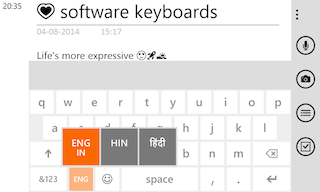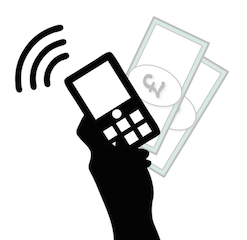We marvel everyday at our connected life. About how much the smartphone and internet have made it easy to stay connected and find information. While we certainly have come far in the past two decades of computing technology, there is much interesting work yet to be done and social benefit yet to be accrued. Kevin Kelly put it aptly in his recent post “You Are Not Late”:
The last 30 years has created a marvelous starting point, a solid platform to build truly great things. However the coolest stuff has not been invented yet — although this new greatness will not be more of the same-same that exists today. It will not be merely “better,” it will different, beyond, and other. But you knew that.
So what different, beyond and other will the more evolved internet be? Here is my list of hopes and aspirations for how mobile phones will push the boundaries of connectedness:
More languages, done better
The mobile internet is exploding in importance in Asia, Africa, South America. If you read and write English, you are the top dog, hurray for you. If you speak a Latin-derived language or Chinese-Japanese-Korean you likely have enough local content in your language, but may have problems reading the rest of the English web. If you are in the none-of-the-above club, you probably get social networking, but little of anything more substantial. The fact of the matter is that English dominates domain topics like medical information, business, entrepreneurship, news, travel advise, personal finance, civic issues and arts and culture.
Can we aspire for better online products and services around these under-represented languages? Things to watch out for:
- Better usability and design: Design of websites, software, and smartphones has historically taken an all-or-nothing. You either speak English or :de: or :cn:. No flexibility permitted. And when you do pick “the other language”, the translation of the content or controls is often confusing or hilarious. The solution? Better sensitivity to user experience, good design, smarter web standards (e.g HTML5), and just-right translation services.
- Better tools for creators: It ought to be easier to create new text, audio and video in many Asian languages, but product development tends to follow the money. Will the new languages be monetizable enough?
- Better translation: Our web browsers, particularly those on mobile do a poor job with translation of text on the web. Especially when you need only some text translated some of the time. Again, better user experience design will deliver large improvements in consumer delight.

More interactivity and input methods
Another dimension where mobile computers have much to improve upon is methods of interaction. In the input area, we have already seen serious advances: reconfigurable touch screen keyboards with easy text and emoji, touch and gestures, and voice input (with serious accent limitations). In the output department, what novel forms of display will time bring? Leave your thoughts in the Comments area below.

Phone with biometrics: a trust and identity hub
Odds are you have already used your phone to receive on-time passwords or generate OATH codes used by high-security websites. With the slow death of error-prone passwords on the internet, there are an increasing number of choices available for more seamless login and identity verification that are tied to the personal nature of a mobile device. These are more intuitive for the user and are suitable for low-literacy populations too.
Low power, proximity based sensors in the smartphones (Bluetooth Low Energy, NFC) are already showing up as authentication or authorization enablers: for example in unlocking a smart door, reading a smart electricity meter or controlling lights.
Then there is biometric ID, a much feared technology in the West, which is finding new applications and new possibilities in the East, notably India. The Aadhaar biometric ID database operated by the Indian government for example, uses multiple fingerprints and an eye scan of an individual to precisely identity him or her in a nation of a 1.2 billion individuals. The mobile internet and mobile biometric authentication will together make a potent combination, assuming privacy laws are robust and operational processes secure. As the next generation of mobile computers and trust services find it possible to achieve “perfect” authentication with rich biometric inputs, we will see ground-breaking new applications in a 1 billion people market: digital signatures, payments, micro-insurance, trading of physical goods, medical health delivery to name a few. Low-friction, high-usability connected experiences, and a better quality of life all around.

